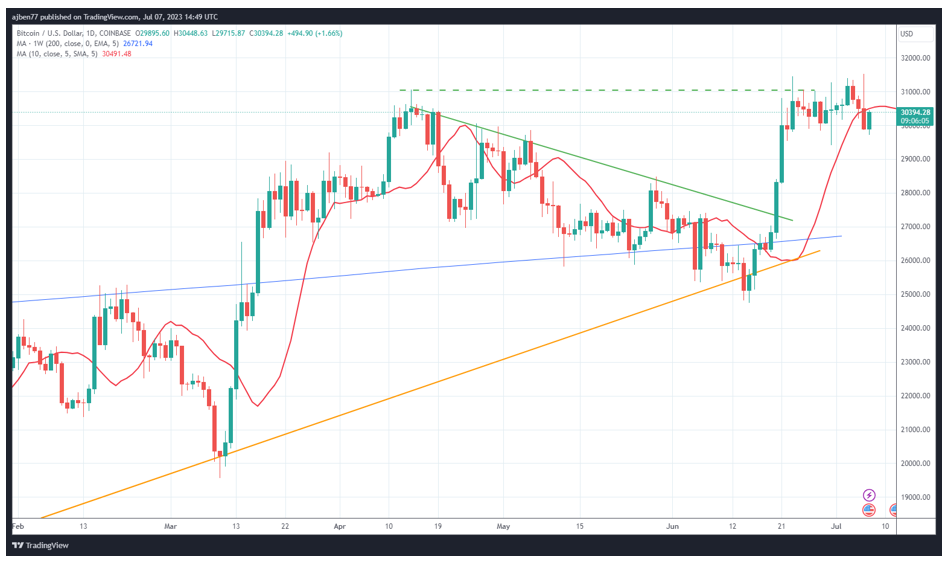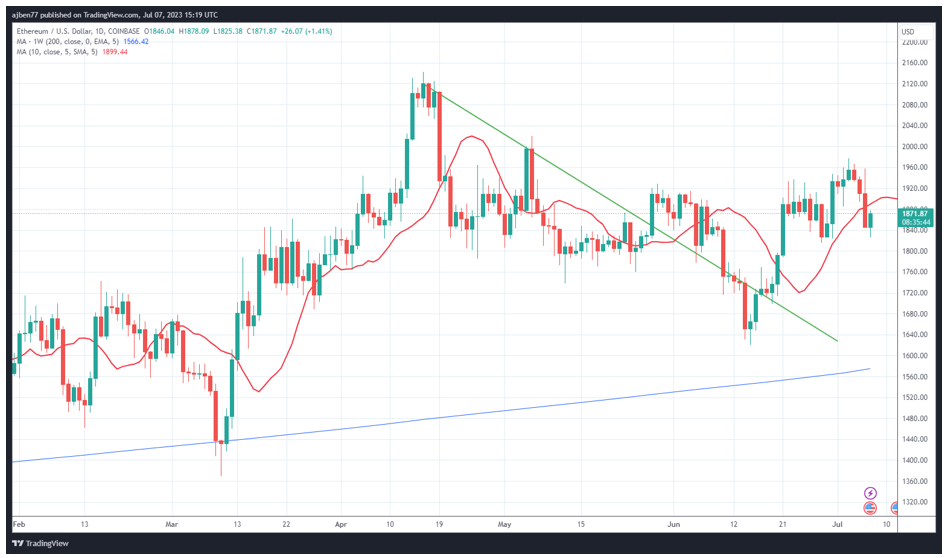The Global Fund Fiesta Fueling Crypto
 |
| By Juan Villaverde & Alex Benfield |
Since October of last year, global liquidity has been on a joyride.
Picture a sea of dollars, euros, yuan, yen and pounds spewing out of the world's largest central banks like a geyser in a cartoon. Meanwhile, asset prices — gold, stocks, crypto, you name it — have also been having a blast, going up, up and away.
This correlation isn't a cute coincidence; it's the financial equivalent of peanut butter and jelly. Ever since the 2008 financial crisis, liquidity has become the life of the price action party, elbowing interest rates out of the spotlight.
Why, you ask? Well, it's all thanks to our overleveraged global economy.
With debt climbing higher than Jack's beanstalk, companies and governments start to panic when money gets tight. It's like musical chairs, but instead of losing a seat, you face bankruptcy.
So, like a fairy godmother, central banks wave their wands, and voilà! More money. This newfound liquidity not only gives borrowers a lifeline, but also puts a spring in the step of asset prices.
What about interest rates in all of this? Well, let's just say they are more of a wallflower than the belle of the ball.
With every $8 of debt, only $1 is for new debt. The rest is all about refinancing the old debt. You know, like taking out a loan to pay for another loan.
Decades of this debt daisy chain have left corporations and governments doing a tightrope walk over a bankruptcy abyss. As long as they can roll their debts forward, they're safe. But one false move, and it's a long way down.
And central banks aren't oblivious to this high-stakes circus act. They're like diligent firefighters, always ready to douse the flames of debt deflation.
Just look at the Bank of England. Last year, it went all-in, printing money like it was going out of style, to help the British government juggling gilt loans.
But the Brits weren't the only ones dancing this dangerous tango. Central banks around the globe were all too aware of the crumbling floor and ramped up their own liquidity.
But oh, they're sly! They made loud proclamations of their unwavering commitment to fighting inflation, while sneakily flooding the market with more funds.
Take the U.S. Federal Reserve for instance. It’s up on its podium, making grand statements about tightening liquidity. But, if we peer behind the curtain at its liquidity chart, we're treated to an entirely different show.
Rewind to late 2021 and follow the plot through to late September 2022. That's when liquidity took a nosedive. It was right around the time of the U.K. Gilt crisis — a fright fest that had central bankers worldwide spooked enough to halt their plans for quantitative tightening.
Then, plot twist: Between late September 2022 and March 2023, the liquidity line decided to take a breather. It flatlined.
But don't be fooled — this wasn't a moment of calm. It was the Fed skillfully sterilizing their policy in an attempt to offset the earlier tightening. Basically, it was whispering sweet nothings about budget control while secretly refilling the cookie jar.
Cut to March 2023, and we've got another thriller on our hands: the U.S. banking crisis. That was the cue for liquidity to start its grand ascent, a climb that's been steady ever since, contradicting the Fed's public statements.
But the global markets are not easily fooled. They've become savvy to the Fed's smoke and mirrors. It's simple, really: When liquidity ascends, the stock market straps on its dancing shoes.
So, the next time the Fed claims they're reigning in the funds, remember the backstage view we've been privy to. Watch the trends, not the grandstanding. Because when it comes to predicting the stock market's next move, it's all about following the real money trail.
And let's not forget about our friends in China and Japan. They've also been pumping in hundreds of billions in liquidity since October last year. This global fund fiesta is what's been fueling the asset price rally of 2023.
And guess what? The party doesn't seem to be ending anytime soon. So, keep your dancing shoes on, because it looks like crypto prices will be grooving to this liquidity tune till at least 2026.
Now, let’s turn to Alex to see what’s going on with price action in the crypto world right now.
Bitcoin Leads the Pack
As Juan said, the macro winds seem to be shifting in favor of crypto investors once again. However, sometimes these shifts take a little time to be fully absorbed by the market.
While the medium- and long-term outlook on crypto prices looks incredibly positive, in the short term, asset prices have been caught below resistance levels and have been struggling to definitively break out.
For instance, Bitcoin (BTC, "A-") is oh so close to officially breaking through resistance at its previous high. As soon as it can close above and clear the $31,000 level, BTC is likely to run.
In fact, BTC barely has any resistance between current levels and $36,000. While that might not seem like a huge run, it would represent an almost 20% gain should Bitcoin clear above that $36,000 level.

After Ethereum (ETH, “B”) broke down below $1,800, it looked like it might not have another rally in store this summer. But Bitcoin’s latest flash of bullishness might just push the second-largest cryptocurrency to new highs.
That said, ETH still has quite a ways to go before it surpasses its yearly high of $2,150. The first step ETH will need to make is to flip $2,000 back into support, but that level has offered significant resistance so far this year.

Where Bitcoin goes, the rest of the crypto market will follow. It has clearly taken the lead here and will likely decide the fate and the direction of the rest of the market.
If Bitcoin fails to surpass its yearly highs, it’s almost certain that Ethereum won’t cross above its own highs, either. But a bullish Bitcoin could draw investors to the rest of the market. A rising tide floats all boats in this case.
After all, in the financial world, it's the subtle moves behind the scenes that have the biggest impact. Central banks — despite their public austerity performances — are orchestrating a liquidity spectacle that's invigorating global markets, including cryptocurrency.
Bitcoin's recent brush with the $31,000 resistance mark signals a potential rally in the crypto market, led by its leader. Meanwhile, Ethereum is still in Bitcoin's shadow. But it may soon find the momentum to break its own resistance levels.
Overall, global finance is a dance of strategy and liquidity. With no signs of the global fund party slowing down, it’s clear the crypto market is set for an interesting journey.
Watch the actions, not just the words, of central banks, and stay informed by keeping up with our updates. Indeed, this financial and monetary dance is just getting started.
Best,
Juan & Alex

